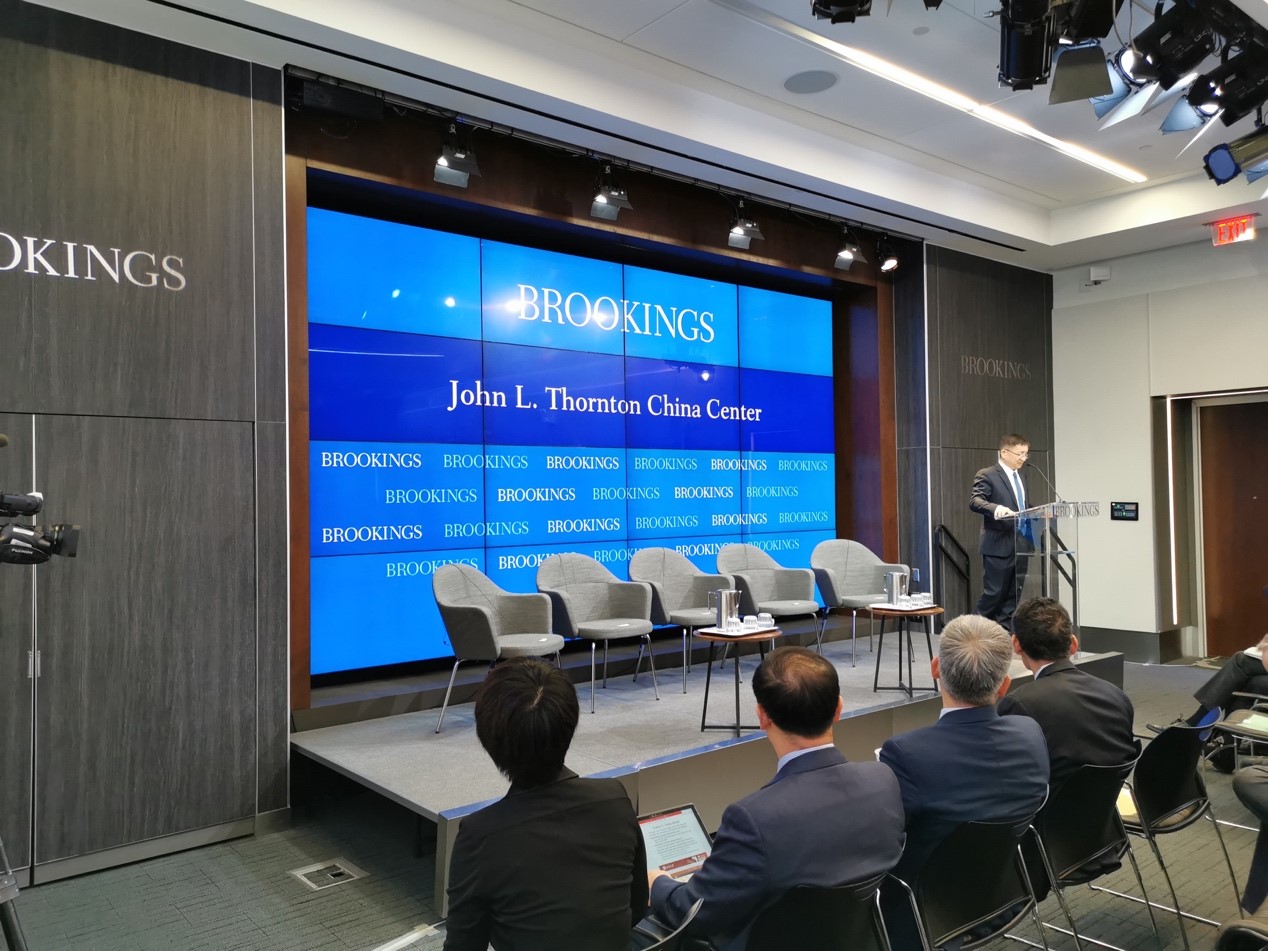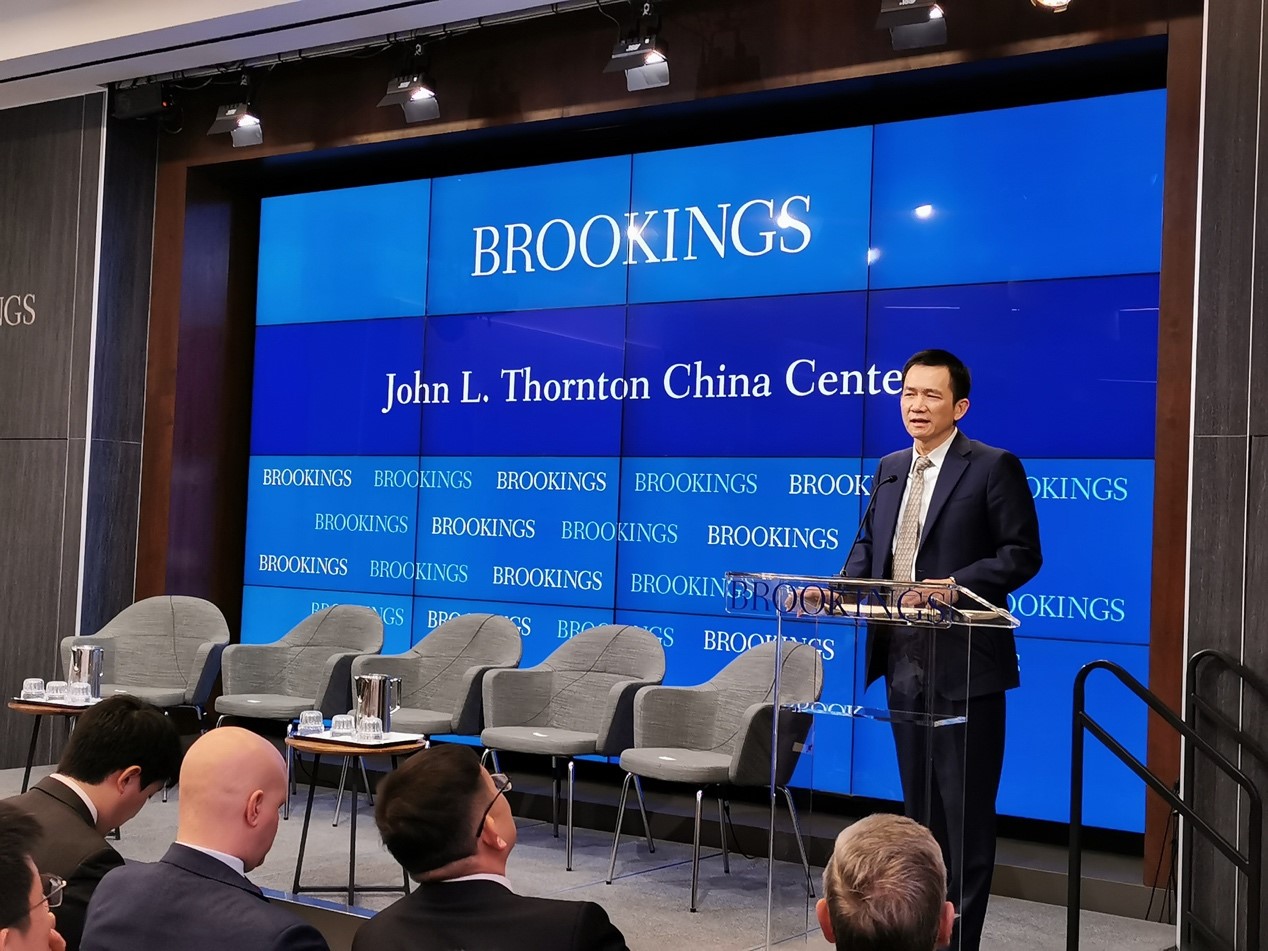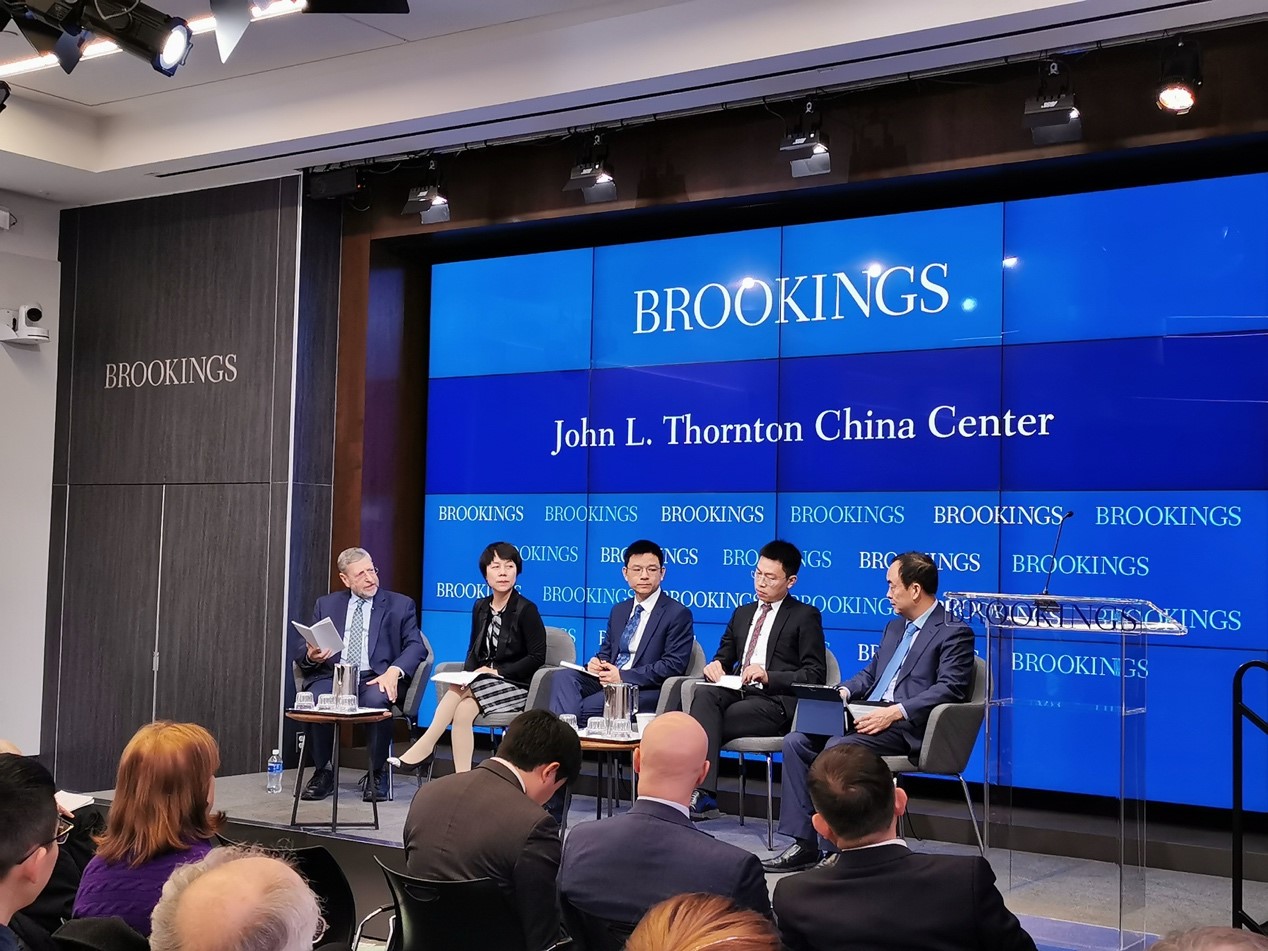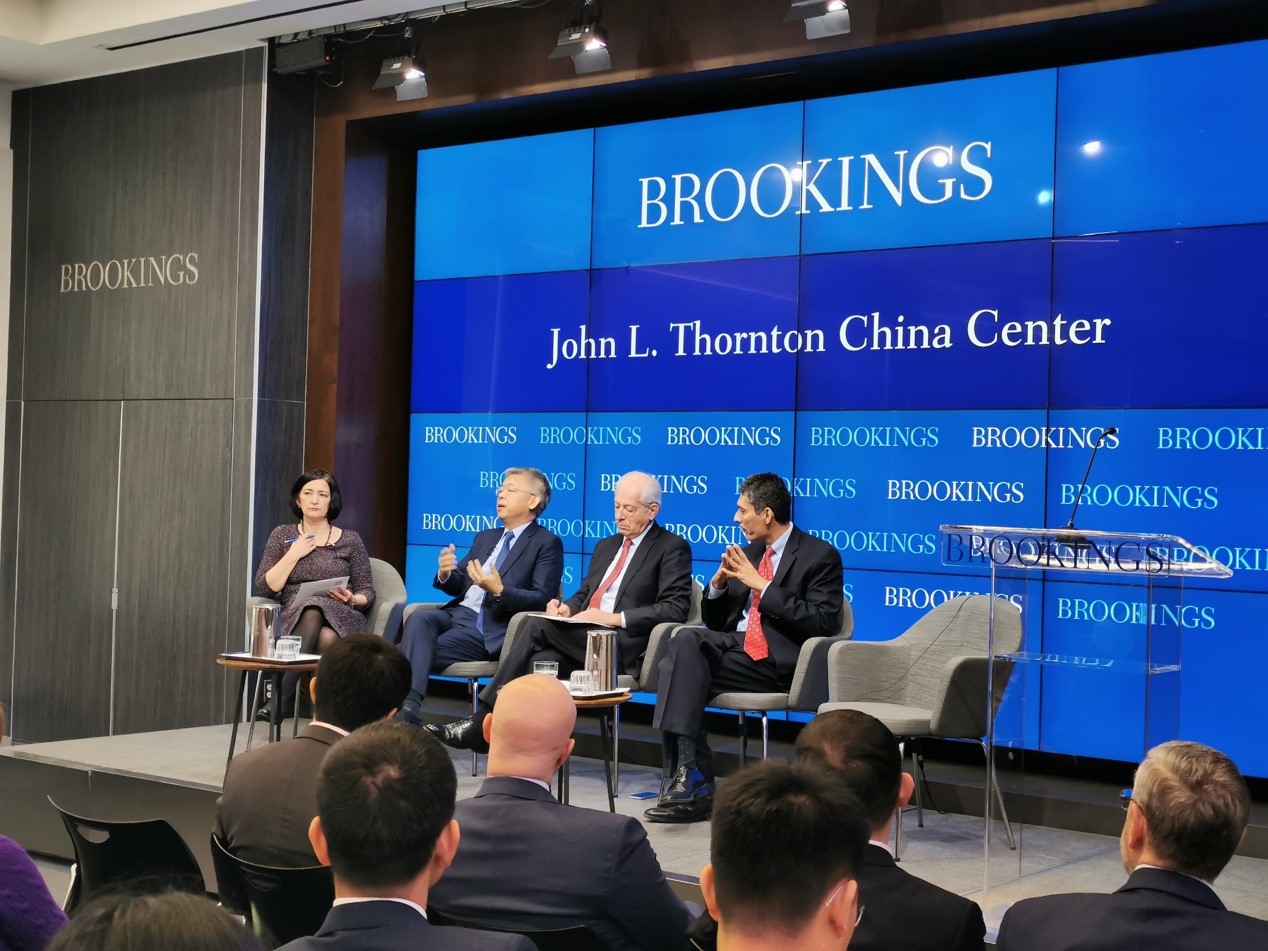
January 10, 2020, Washington, D.C., “China 2049: Economic Challenges of A Rising Global Power” (hereinafter, China 2049 ), the English version of a joint research report written by economists from the National School of Development at Peking University (NSD) and the Brookings Institution was pre-released. Attendees include more than 200 representatives from institutions like the World Bank, the International Monetary Fund, the U.S. Congress, the U.S. State Department, the U.S. Department of Commerce, the U.S. Department of Defense, the U.S. Senate, the U.S.-China Business Council; universities like Georgetown University and Johns Hopkins University; well-known think tanks and companies like the Brookings Institution, the Peterson Institute for International Economics and the Center for Strategic and International Studies, and senior experts on China-U.S. issues such as Ken Lieberthal, Nicolas Lardy and Dewardric McNeal. The conference was reported by BBC, Bloomberg, Phoenix TV, South China Morning Post, Kyodo News, among other media.
This was the first time in recent years that top think tanks in China and the United States had carried out in-depth cooperation on a joint research project and simultaneously released the China-language and English-language versions of a joint research report.

Cheng Li, Senior Fellow at Brookings and Director of the John L. Thornton China Center
Cheng Li, Senior Fellow at Brookings and Director of the John L. Thornton China Center, was the first expert to deliver a speech. He said that China 2049 is the first key outcome of an in-depth joint research project between the Brookings Institution and a renowned Chinese think tank, which will improve the objective understanding of the Chinese economy from all walks of American life and play an important role in promoting knowledge exchange between China and the United States.

Professor Yang Yao, Dean of the NSD
On behalf of the joint research group, Professor Yang Yao, Dean of the NSD, gave an introduction of the major results of China 2049 report and basic information of the NSD.
The press conference & discussion meeting consisted of two symposiums, focusing respectively on China’s economic challenges at home in the next three decades: aging, environment and the new growth model, and on new external challenges abroad: trade structure, technological competition and global order.

The First Symposium (from left to right: David Dollar, Xiaoyan Lei, Xun Wang, Min Wang, and Jintao Xu)
The first symposium was moderated by David Dollar, Senior Fellow of the John L. Thornton China Center at the Brookings Institution and one of the editors of the research report. Professor Xiaoyan Lei, Research Fellow Xun Wang, Professor Min Wang, and Professor Jintao Xu at the NSD respectively gave detailed speeches themed around “aging and population structure transformation”, “growth convergence and a forecast”, “urbanization and household consumption” and “environment and sustainable growth” and interacted with on-site guests.

The Second Symposium (from left to right: Mireya Solis, Yiping Huang, Peter A. Petri, and Eswar Prasad)
The second symposium was moderated by Mireya Solis, an Asia Pacific Trade Architect. Yiping Huang, Sinar Mas Chair Professor of Economics and Finance at the NSD, Peter A. Petri, Carl J. Shapiro Professor of International Finance in the Brandeis International Business School and Distinguished Senior Research Fellow at the Brookings Institution, Eswar Prasad, Distinguished Senior Research Fellow at the Brookings Institution and Tolani Senior Professor of Trade Policy at Cornell University, respectively gave detailed speeches themed around “China’s financial reform”, “international technology competition”, and “RMB internationalization”, and interacted with on-site guests.
For more information, please follow:https://www.brookings.edu/events/china-2049-economic-challenges-of-a-rising-global-power/
China 2049: Economic Challenges of A Rising Global Power
"China 2049: Economic Challenges of a Rising Global Power" is the outcome of a more-than-one-year joint research project between the NSD and the Brookings Institution. The project was launched and organized by Yang Yao, Dean of the NSD, under the coordination of David Dollar, Senior Research Fellow at the Brookings Institution. The English-language version of the report will be published by Brookings Institution Press and the Chinese-language version will be published by Peking University Press.
The joint research project was launched under the context of the CPC Central Committee’s two centennial goals. Because it is almost a foregone conclusion that China will achieve its first centennial goal, our research has paid more attention to the second centennial goal of basically achieving modernization and building a strong modern socialist country on the 100th anniversary of the founding of the People’s Republic of China. The joint research group comprises a host of Chinese and American scholars which carried out their research from 15 different aspects and all their analyses converge to answer three questions: the reasons for China’s success in the past 40 years, new challenges in the next 30 years, as well as policy recommendations to resolving these challenges.
According to the forecast of the report, China will probably become a high-income economy defined by the World Bank around 2025. After 2030, China’s GDP can surpass the United States, becoming the world’s largest economy. By 2049, while China’s economic growth rate may have slowed down to 2.7% - 4.2%, its per capita GDP measured by purchasing power parity will have become two-thirds of that of the United States, which means that the second centennial goal will be achieved.
In the next three decades, China will face challenges such as loss of low-cost advantages, rapid population aging, and reversal of globalization as well as environmental issues and strong carbon emissions reduction requirements. In order to promote the transformation of China’s economic growth from being factor-driven and investment-driven to innovation-driven, to make it become a high-income economy and achieve high-quality growth, the report proposes the following policy recommendations:
The first is to put an end to the “dual track” reform strategy, reduce or even eliminate policy distortions as soon as possible with a view to truly achieving “competitive neutrality” and completing the transition from a planning economy to a market economy.
The second is to actively respond to the impact of population aging, end family planning policies, build adequate and high-quality elderly and child care facilities, strengthen labor protection for women, and encourage fertility.
The third is to protect intellectual property rights, increase investment in basic research, improve industrial policy instruments such as subsidies and localization rate, construct infrastructure, eliminate policy barriers, support innovation and industrial upgrading, and attach considerable importance to spillover effects on international markets.
The fourth is to shift the focus of public finance from supporting economic stability to increasing economic efficiency and improving income distribution: balance the total income and expenditure in the pension account and thus narrow pension differences among different groups of people by increasing the allocation of state-owned assets and postponing the retirement age.
The fifth is to develop a multi-layered capital market, vigorously promote the reform of traditional financial institutions such as commercial banks and insurance companies, reform the regulatory system, and balance the relationships between financial innovation and stability.
The sixth is to completely put an end to the long-term separation between urban and rural areas, abolish the household registration system, reform the property rights arrangement of rural land, support the registration of rural migrant workers as permanent urban residents, and strive to improve the level of urbanization.
The seventh is to adopt market-oriented policy measures, such as levying environmental taxes and implementing the carbon emissions trading scheme, with a view to projecting China’s economy towards a green and low-carbon development path and improve the quality of production and life.
The eighth is to continue to adhere to an independent foreign policy, explicitly articulate its commitments and timetables of further opening up, build a new pattern of all-around opening up, and flexibly tackle problems related to its identity as a developing country and international role in the process of interacting with the international trade system.